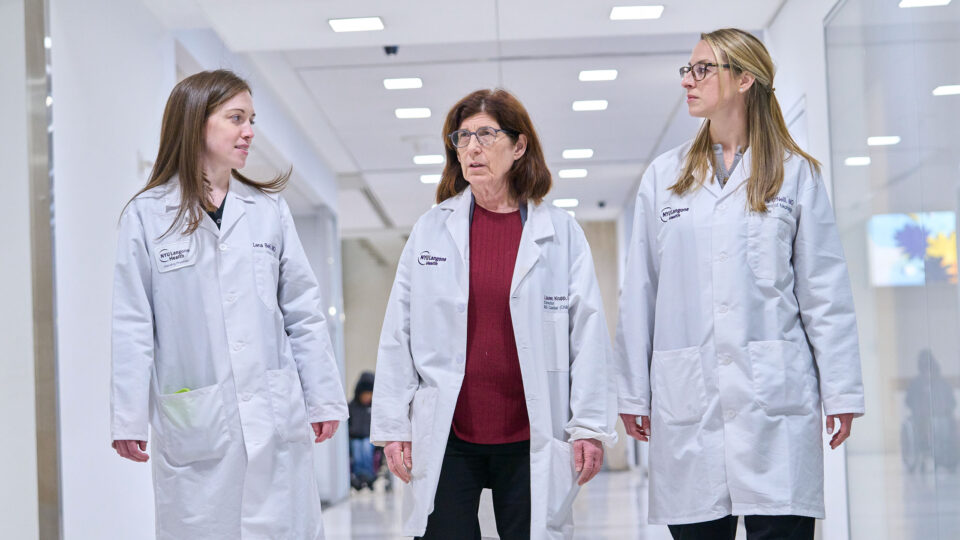Anti-beta-amyloid therapies have redefined early Alzheimer’s care, and the next frontier is targeting tau and presymptomatic intervention. At NYU Langone Health, Martin Sadowski, MD, PhD—the Zachary and Elizabeth M. Fisher Professor of Neurodegeneration and Alzheimer’s Disease in the Department of Neurology and director of the Fisher Center Alzheimer’s Clinical Trials Program at NYU Langone—has helped lead some of the most influential trials in the field and continues to build a robust clinical trial portfolio to advance comprehensive, early intervention.
In this Q&A, Dr. Sadowski shares his perspective on how lecanemab and donanemab are performing in practice and what therapeutic developments he will focus on next.
Physician Focus: You have played a significant role in advancing lecanemab and donanemab. Can you tell us about your experience with these drugs?
Dr. Sadowski: Since 2008, NYU Langone has been one of the leading sites in the U.S. for testing and developing these, as well as many other monoclonal antibodies targeting disease modification.
Over the past two years, we’ve been treating patients clinically with lecanemab, and as of early this year, with donanemab. In most cases, lecanemab slows the progression of the disease and even stabilizes it if caught early enough. But the number of people in whom the disease is stabilized is relatively small, only about 10 percent. Still, the earlier we start, when patients have only mild memory problems, the better the outcome.
Donanemab is capable of completely clearing beta-amyloid from the brain in 50 percent of people within 12 months or 12 injections. That number can go up to 80 percent after 18 months of treatment. But those people will still accumulate some tau, which we are not yet able to target.
The study for lecanemab was the most effort-consuming trial we have ever done and a major commitment for participants. It was initially supposed to be 18 months but evolved into four and a half years in order to investigate long-term benefits. Procedure time, including infusions, took three hours, and we often kept patients longer for pharmacokinetic measurements of the circulating antibody, memory tests, brain scans, and other tests. To be a candidate for these trials, you have to be a champion, a kind of frontiers person. We had many committed patients who participated without attrition.
“To be a candidate for these trials, you have to be a champion, a kind of frontiers person.”
Martin Sadowski, MD, PhD
Physician Focus: What part of NYU Langone’s current research portfolio are you most enthusiastic about?
Dr. Sadowski: Treatment with anti-beta-amyloid therapy is now the standard of care for symptomatic patients, and we’ve greatly contributed to our collective knowledge about Alzheimer’s disease through these trials. But we are at a crossroads; we need to gain a better understanding of the interaction between beta-amyloid and tau to develop agents that target tau effectively. Tau is the new frontier.
One of the most exciting global clinical trials with which we’re a site leader is CELIA, a phase 2 trial testing the safety of BIIB080, an investigational antisense oligonucleotide therapy designed to target microtubule-associated protein tau (MAPT) mRNA and prevent production of tau protein. It’s the most advanced gene therapy in clinical development for Alzheimer’s disease, and preliminary results show it lowers the expression of tau protein in the brain by 50 percent, to stop the buildup of abnormal tau accumulation. But we need further confirmation. Patients are currently being transferred to the open-label extensive treatment period for this study.
Physician Focus: Your program is also participating in the Tau NextGen trial. Can you tell us about this work?
Dr. Sadowski: The Tau NextGen trial is supported by the Dominantly Inherited Alzheimer Network Trials Unit (DIAN-TU) and focused on advancing treatment for those with inherited forms of the disease. We’re actively recruiting patients for this study.
It’s the first trial to target both tau and beta-amyloid plaques with two drugs simultaneously—lecanemab and E2814. The goal is to first test the efficacy of the investigational anti-tau therapy E2814, then test if combining the two treatments, and potentially staggering them, might improve efficacy. Patients with either presymptomatic or symptomatic dominantly inherited Alzheimer’s disease can enroll.
A unique aspect of this trial is we are sending nurses to the patients to deliver the IV medications at home. Traveling for treatment is a huge inconvenience for patients and a barrier to compliance we are aiming to overcome.
Physician Focus: How else are you approaching the challenge of treating Alzheimer’s before symptoms appear?
Dr. Sadowski: Another avenue of research we’re actively pursuing is testing lecanemab and donanemab in patients with presymptomatic Alzheimer’s disease. We know beta-amyloid starts accumulating in the brain 15 years before symptom onset, and tau about 10 years prior to onset. If we can identify asymptomatic patients based on blood tests, confirm the presence of beta-amyloid pathology with brain scans, and clear it in the presymptomatic stage, we’re hoping to help them avoid the fate of Alzheimer’s disease.
“By the end of 2030, our goal is to offer preventive treatments for managing the disease in its pre-symptomatic stages.”
Physician Focus: Where is Alzheimer’s disease research heading?
Dr. Sadowski: With lecanemab and donanemab, we have effective, standard-of-care drugs that target beta-amyloid, but there’s still more to do. We have to expand applications for those therapies and develop effective drugs for targeting tau.
Generally, though, the entire field is going toward preventive treatment for Alzheimer’s disease. Our preventive trials for beta-amyloid are fully enrolled and will last three to four years. In the next five years, we will have better anti-beta-amyloid antibodies and some idea of how to use them in preclinical disease as a form of prevention; we will also have an effective tau agent. It’s a bold vision, but it’s what we’re hoping for to effectively prevent or slow down ensuing neurodegeneration.






